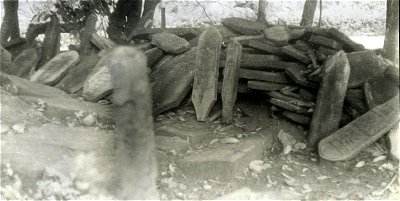Distribution of Memorials
by K. L. Kamat
First Online: October 16, 2000
Page Last Updated: December 07, 2024
Abundance of the memorials closely follows the distribution pattern of the tribals in the south and south-east of the state of Madhya Pradesh (map) in Central India. Non-tribal memorials could be seen in other parts of the state as well. Main thorough-fares, village entrances, and graveyards are the usual places where these are installed, stored, or dumped. At the sites located in open field or in forest, one to fifty memorials could be seen under the shade of a tree. Often they are mixed up with icons and sculptures from ruined temples and collectively they form deity of the locals. Though no attention is being paid for their maintenance, they are worshipped periodically. An annual sacrifice of a fowl or goat is offered and a feast arranged. If and when an epidemic or famine breaks out, a special pooja and offerings are arranged collectively. In certain villages hibiscus flowers and milk in a coconut shell are offered daily. All these are performed with great care and devotion, not so much for the love of the dead but to ward off his evil spirits.
© K. L. Kamat

A Heap of Wooden Memorials at Pachmadi
Depending upon the local dialect, the memorials are known by different names. Even the same tribe is not consistent in pronouncing the name. The Gonds call them as "Gata", the Korkus as "Gatha" and the Marias as "Honal Gatha". They are also known as "Menhir" and "Mundas". Among the Bhils, a Gata for a woman is referred to as Sati though no sacrificial death on the dead husband's pyre is involved as in other Mahasati stones found in South Indian memorials
Memorials of Madhya Pradesh
Origins | Distribution | Installation
Non-illustrated Memorials | Illustrated
| Wooden
Sculpted & Painted Memorials | Religious
References

